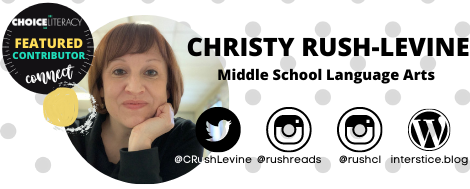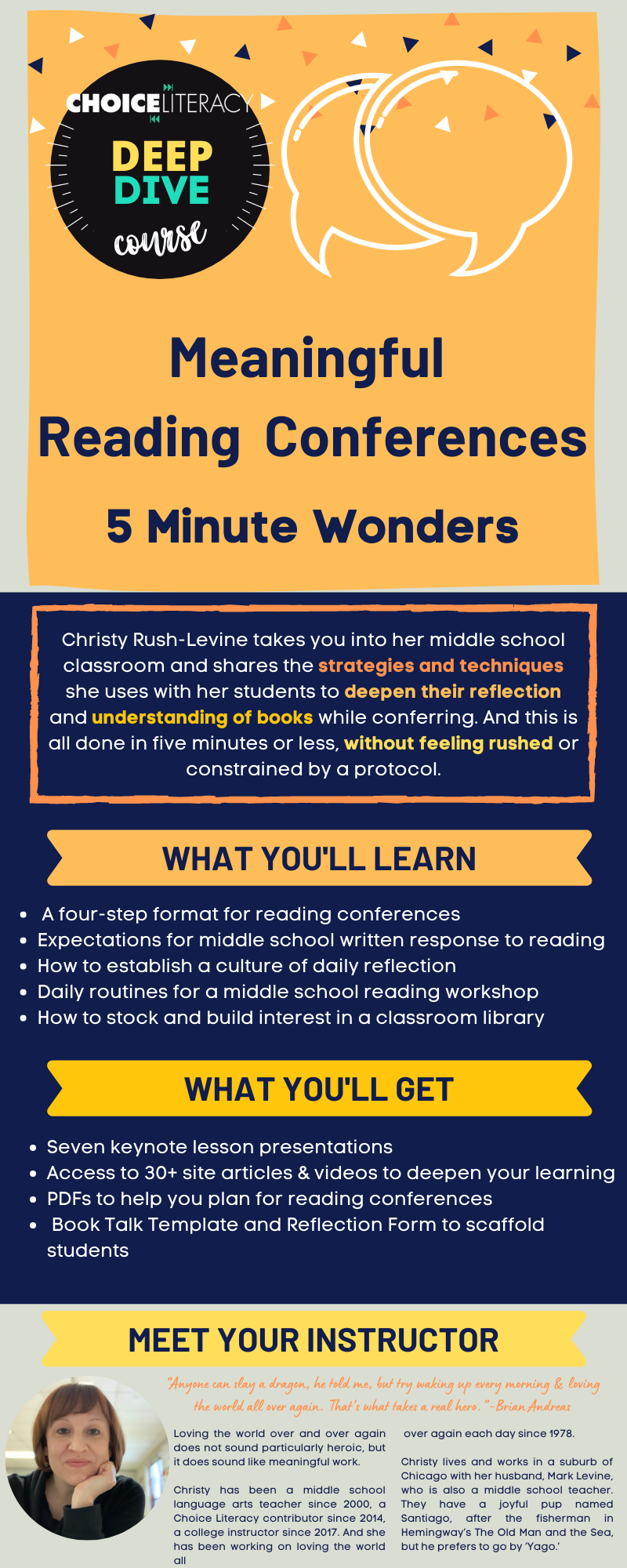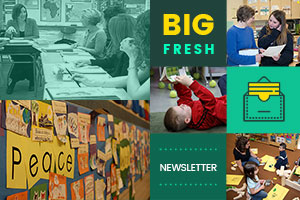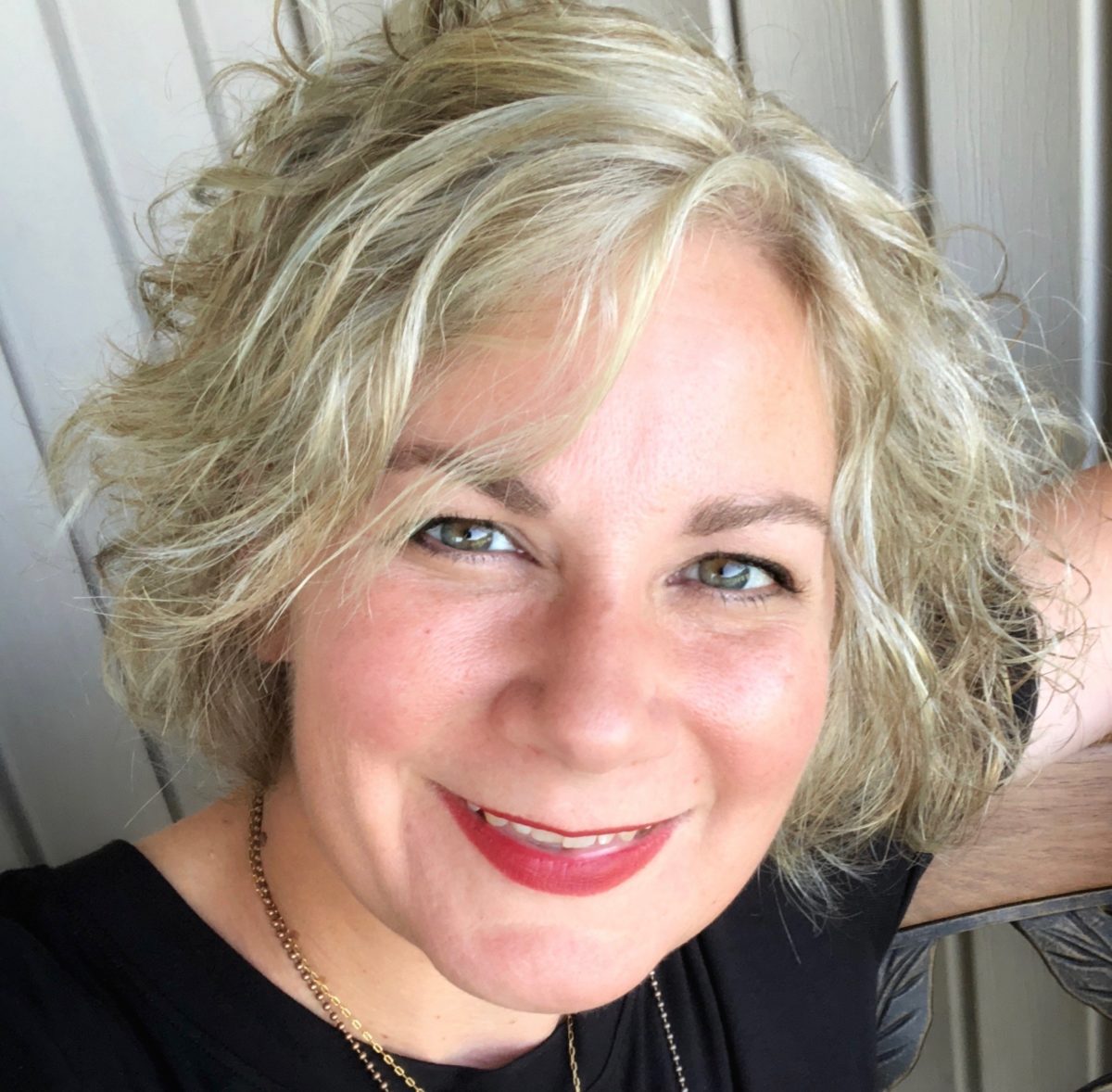Recipes tell you nothing. Learning techniques is the key.
—Tom Colicchio
[Now you can listen to the Big Fresh as a podcast!]
A Process Open to Possibilities
“I finally learned to make stuffing as good as yours!” my mom exclaimed during a recent phone conversation.
I had to laugh. What she referred to as “my stuffing” is in fact the stuffing she taught me to make. Her comment evoked memories of standing at the kitchen island as a teenager, chopping celery, green bell peppers, and green onions alongside my mom. I remember dumping bread cubes into the tray and mixing the vegetables in by hand. From the years of catering to her vegetarian daughters, my mom had modified the traditional recipe by replacing chicken or turkey stock with a mixture of boiling water and butter to soak the bread before popping it in the oven.
I have completely taken over the stuffing preparation for holiday meals. So much so that my mother now identifies it as my recipe. At first I wondered what could possibly have caused her to think my stuffing is different from hers. Then I identified choices I have made over the years to make the recipe my own.
I insist on using bread cubes from the bakery section of the fancy grocery store. I start early, so I can slowly chop the celery, peppers, and onions into tiny pieces. I choose how much bread to add based on the amount of green vegetables I chop, so the ratio is just right. Starting with the bread and adding in the vegetables never works out well. My mixture of boiling water and butter is almost entirely butter. I set a timer to remind me when to remove the foil cover and crank up the heat to crisp the top. I can almost smell the warm freshness of veggies and toasty bread soaked in butter.
It seems my mom is an expert teacher. She modeled so that I understood each part of the process well enough to make moves of my own. She was happy to hand over control, rather than hovering over my shoulder. She was available when I had questions. (I still call her every year to ask what temperature to heat the oven.) She gave me the opportunity to make something that mattered to me. My mom not only taught me how to make stuffing, but also helped me take ownership of the family recipe.
How do I encourage students to take ownership in the classroom? Isn’t this the ultimate goal? Thinking about my mom’s exclamation causes me to reflect on the possibilities for my students. For students to take ownership, they do not need a precise recipe. Rather, students need a process that is open to possibilities. Students need room to make their own choices. Students need a teacher who will hand over control, but remain available to answer questions. And perhaps most importantly, students need opportunities to create what matters to them.
As I head back into the classroom this January to continue writing with my sixth graders, I am carrying with me the desire to give students the ownership my mom gave me. Then one day, maybe, I will write a piece as good as theirs.
This week we look at empowering choice. Plus more as always—enjoy!
Christy Rush-Levine
Featured Contributor, Choice Literacy

This month’s Featured Contributor is Christy Rush-Levine. Christy is a middle school language arts teacher outside Chicago. Connect with Christy on Twitter, Instagram, and her blog, interstice. This month you’ll find her on the Big Fresh podcast, taking over our Instagram feed, and releasing her course about conferring with readers. Learn more about Christy and find her articles and videos on the site by clicking here.

On the podcast, Nawal Qarooni Casiano discusses student-led lessons and choice in workshop. (Don’t miss her article below!)
Last September, Brenda Power, founder of Choice Literacy, offered a lead essay on the legacy we leave when we empower choice in the lives of others. It is timeless and will take you to a link of another Big Fresh on the topic of choice.
What makes choice authentic in literacy workshops? Christy Rush-Levine grapples with this tough question that leads to changes in her instruction.
Ruth Ayres and Heather Rader draw on their work as literacy coaches and teachers to explore the complex connections between choice and structure in writing workshops.

Our courses are being redesigned and will be released soon. At that time, all courses will be free for Literacy Leader members, and select courses will be free for Classic Classroom members. Courses will be available to purchase for everyone else.
Registration opening soon! Christy Rush-Levine takes you into her middle school classroom and shares the strategies and techniques she uses with her students to deepen their reflection and understanding of books while conferring. And this is all done in five minutes or less without feeling rushed or constrained by a protocol.


New members-only content is added each week to the Choice Literacy website. If you’re not yet a member, click here to explore membership options.
Christy Rush-Levine explores the way a shift in assessment questions can give students ownership of their thinking and responsibility for developing meaning from a text.
Nawal Qarooni Casiano outlines the process for empowering students to lead lessons for classmates.
Tara Barnett and Kate Mills give a step-by-step guide for creating choice boards in writing workshop.
In an encore video, Karen Terlecky confers with fifth grader Jillian after she has selected two books Jillian might enjoy reading during workshop. Observe the nuances of guidance and choice working together in this conference.

Shari Frost shares some of her favorite short reads for teachers who find it difficult to keep up with a reading habit.
In a Coaching Minute, principal Lee Snider talks with literacy coach Lora Bieghler about being intentional about getting into classrooms.
Matthew X. Joseph shares how leaders can increase confidence and collaboration in their teams when they lead with positivity.
Quote It:
Choices are the hinges of destiny.
—Edwin Markham
That’s all for this week!



